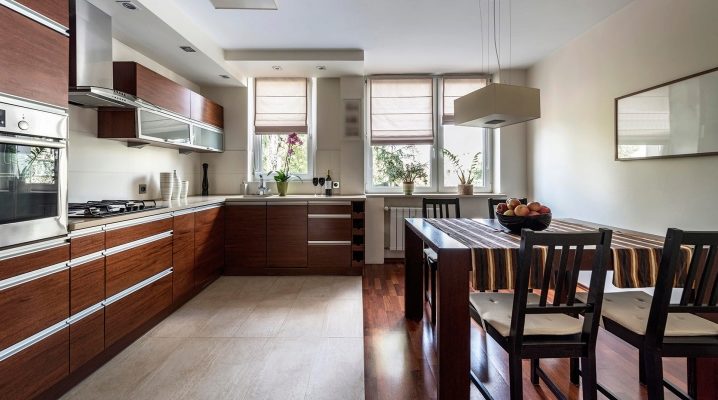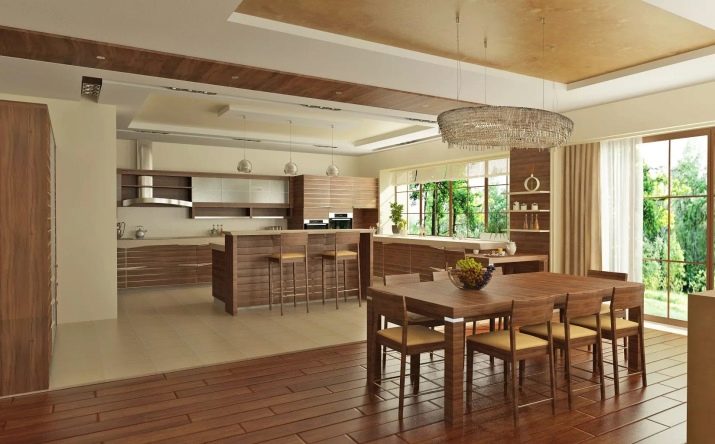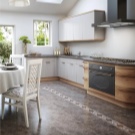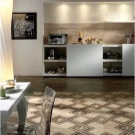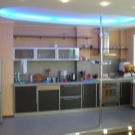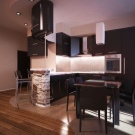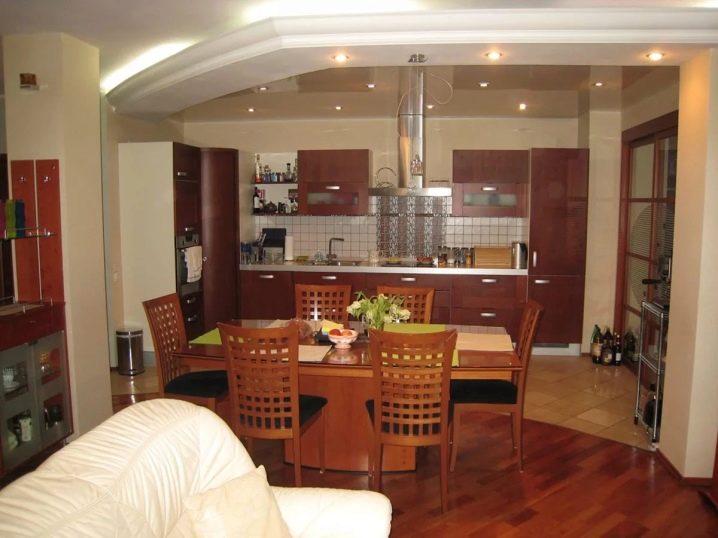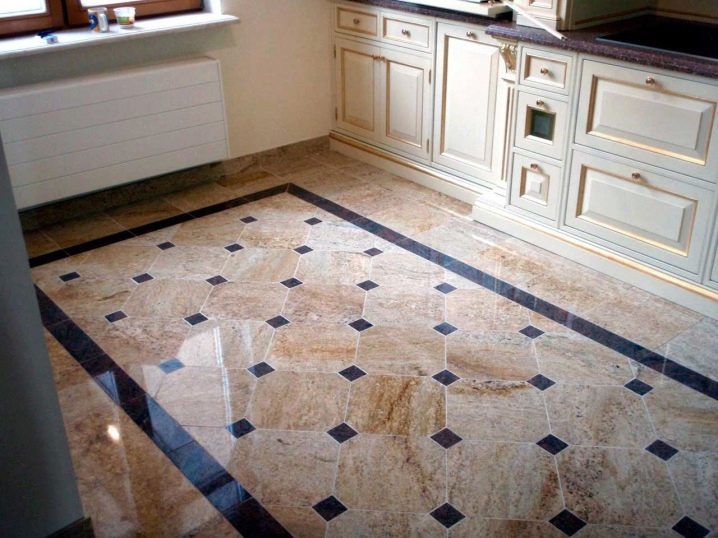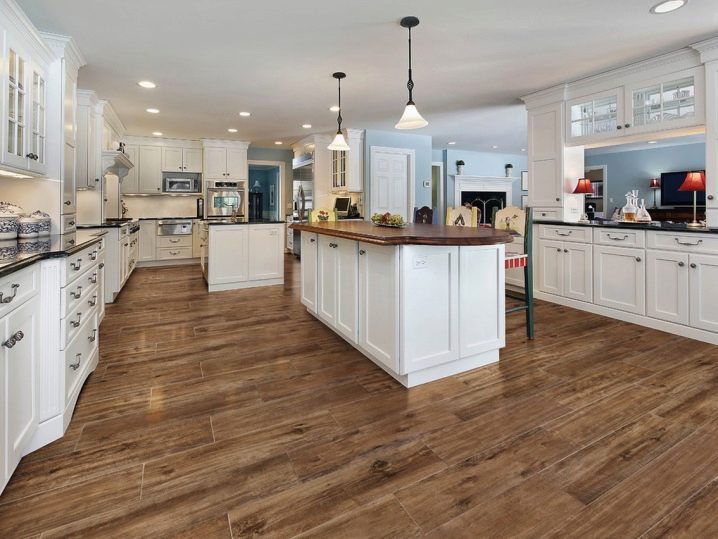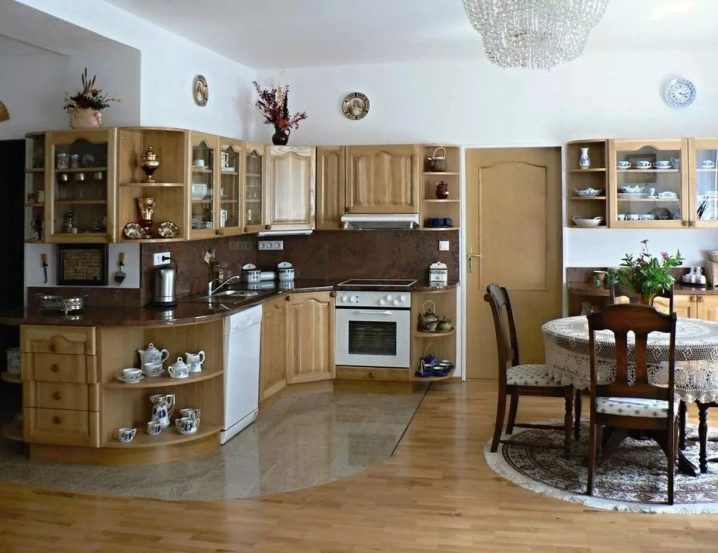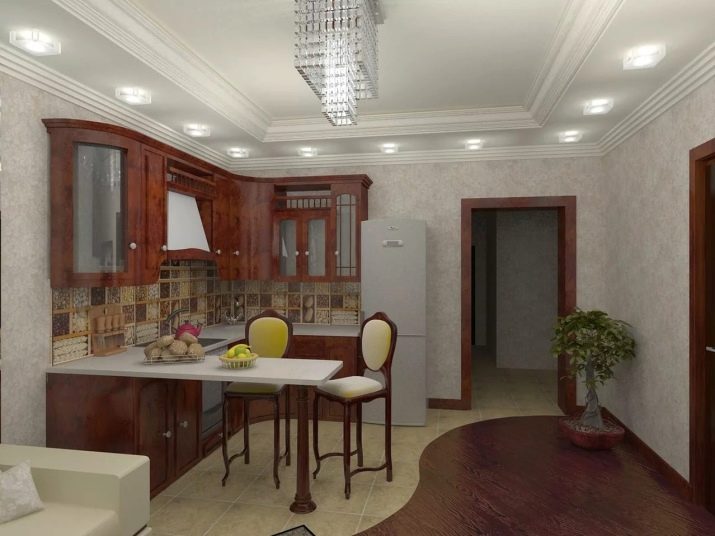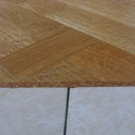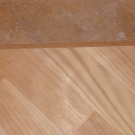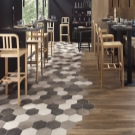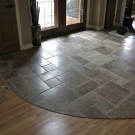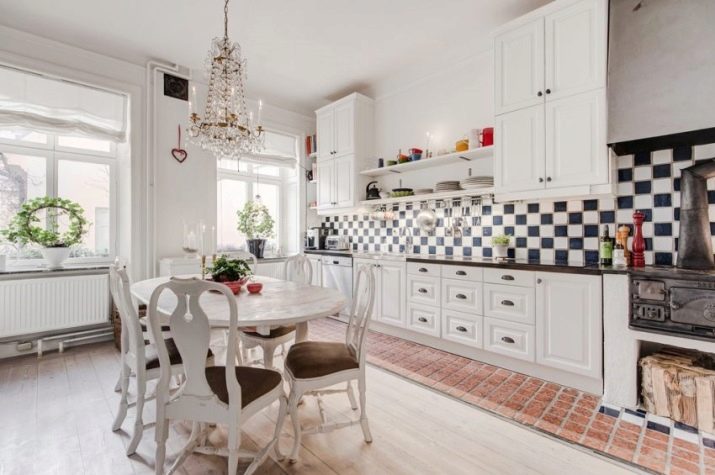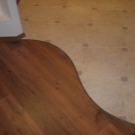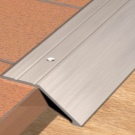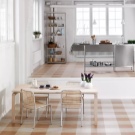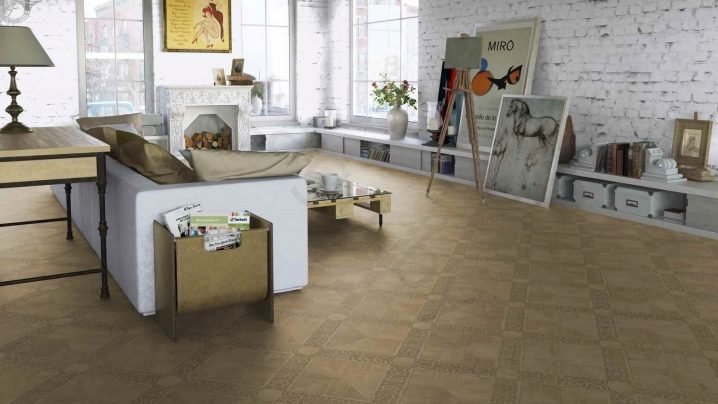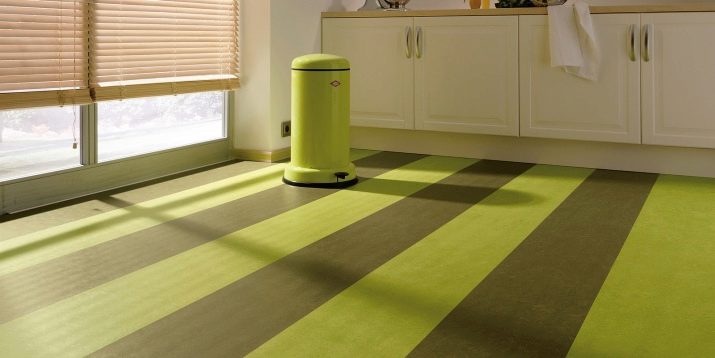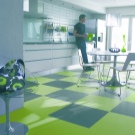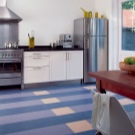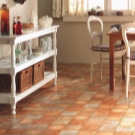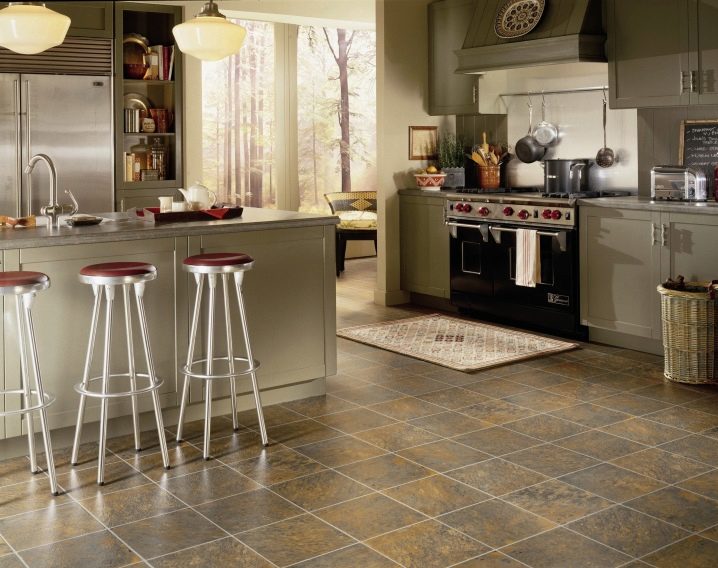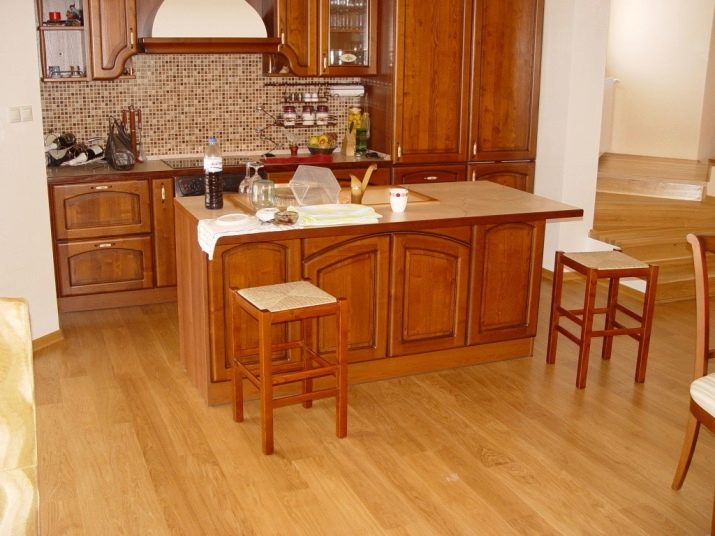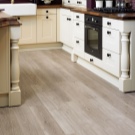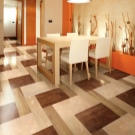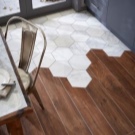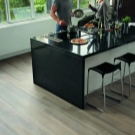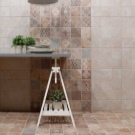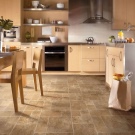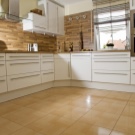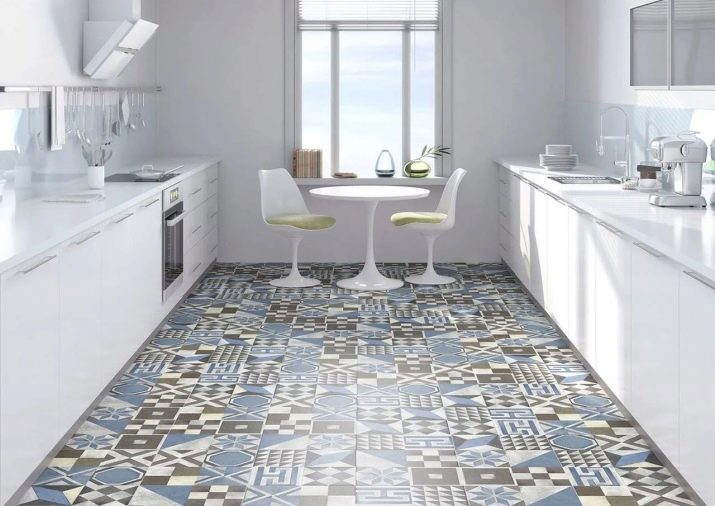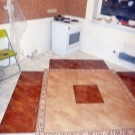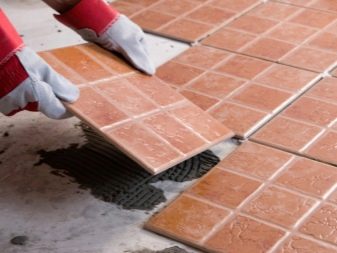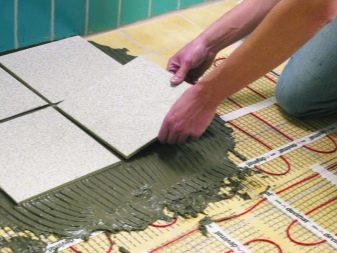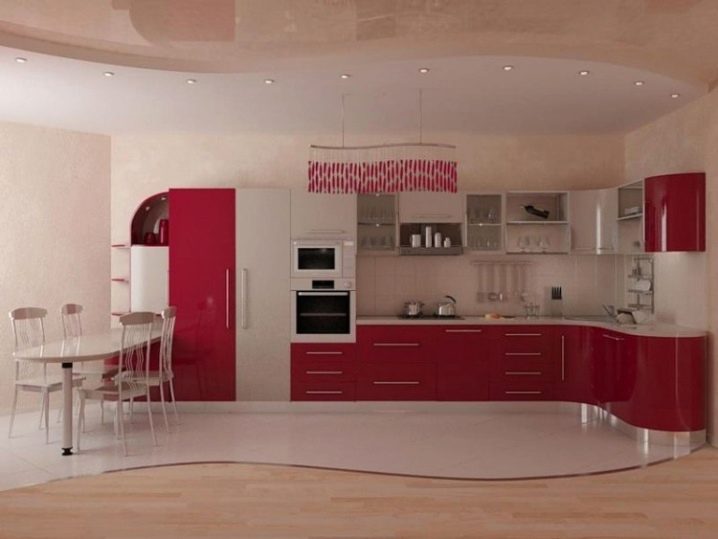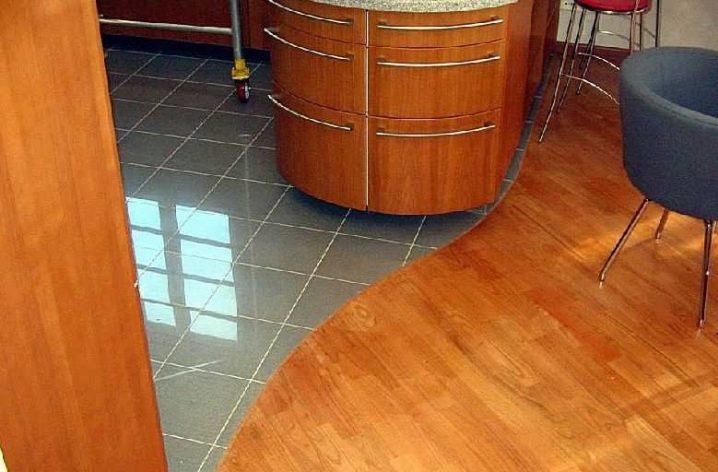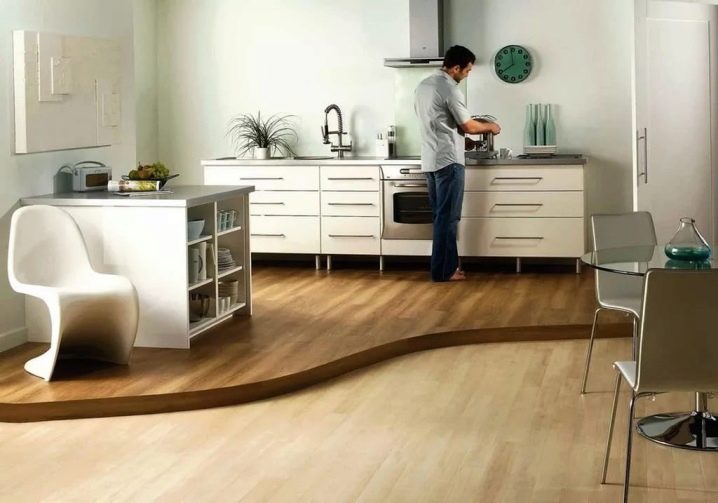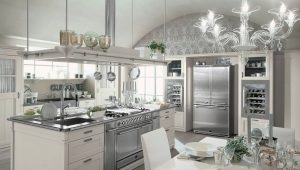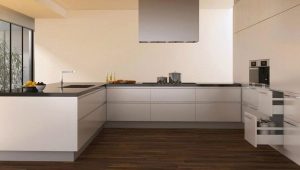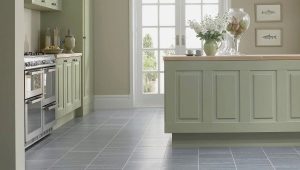Tile and laminate flooring in the kitchen
The kitchen is undoubtedly the most frequently visited place in the apartment. The high degree of contamination, high humidity, as well as possible mechanical effects of sharp and heavy objects make high demands on the quality of the floor covering.
Not so long ago, the only acceptable flooring option was linoleum. However, progress does not stand still, and now many use materials such as ceramic tile and laminate to cover the kitchen floor. About these two varieties and will be discussed.
What to prefer: tile or laminate
In order not to be mistaken with the choice of flooring for the kitchen, it is necessary to take into account the characteristics of each of them. So, if you choose tile on the floor, remember that:
- One of its advantages is high wear resistance and durability.
- With proper installation, a waterproof coating is formed that will not allow the drained tap to spoil the repair to the neighbors from below.
- The tile is very easy to clean from dirt and does not absorb them.
- Thanks to a huge range of sizes and colors, you can put on the floor in the kitchen any ornament that matches your taste and overall style decision of the room.
- Its disadvantages are: cold surface, often quite slippery; lack of sound insulation; at the wrong laying the tile can break if on it something to drop.
If your choice is a laminate, consider the following nuances:
- This is a very durable material, but you must choose a coating with a strength class of 33 and above - even though such a laminate is more expensive, however, in kitchen conditions it will last much longer than cheaper options.
- On the floor, lined with laminate, you can walk with bare legs - it is pleasant to the touch and not cold.
- On the modern market there is a huge variety of laminate colors, so-called “natural” colors are very popular: in the form of wooden plates, under stone, brick, glass, leather, metal, soil, etc. Thanks to such a large selection, the laminate will fit into any interior - from classic to high-tech.
- Among the disadvantages of the laminate are the following: even the highest quality laminate deteriorates from prolonged exposure to water (over 6 hours).
- In order to remove dirt, in some cases it is necessary to dismantle the elements.
Combined version
The most successful and practical solution when choosing a floor covering for the kitchen will be a combination of laminate and tile. With this combination, you can show the visual zoning of the kitchen space - tiles usually lay out the working space, and laminate flooring - the dining area, as well as facilitate the care of the flooring.
Methods for joining laminate and tile
Without the nut. There are several ways to do this:
- using a cork compensator. At the junction of the coatings a strip of cork is glued. Laminate on the edge must be necessarily treated with a means to protect against moisture;
- using a fugue (grout for joints) or putty. The seam between the coatings is laid with a slightly larger layer of putty or grout, it is desirable to cover it with a protective lacquer on top;
- using a liquid tube. Liquid cork is a mixture of cork crumb and glue. It is very resistant to temperature extremes and mechanical damage, so this method of joining flooring is very reliable.As in the previous embodiment, is laid between the seam.
The joint is hidden under the sill. This method of docking is easier. There are several types of thresholds:
- direct threshold. It is used when the laminate and tile are at the same level in height;
- angular threshold. It is necessary when joining materials having a difference in height of 5 mm for a smoother transition;
- bending nut. With it, connect the coating along a curved line.
Advantages and disadvantages
According to statistics, the most popular kitchen flooring is linoleum, in second place is laminate, and in the third - tile. Let's conduct a comparative analysis of all three coatings, consider all their pros and cons, and after that we will draw conclusions about what is better to cover the floor in the kitchen.
So, first talk about linoleum. What do we know about him? Linoleum is a canvas made from polyvinyl chloride. There are three types of linoleum:
- domestic. As a rule, it is used only in residential premises, rather fragile, unstable to high loads and mechanical damage. At the same time, it is cheaper than other species, has a variety of colors,which makes it very popular in the flooring market;
- semi-commercial. More durable and, accordingly, more durable type of linoleum. It is used not only in residential, but also in office space. Also very diverse in colors and textures;
- commercial. The most durable of all. It is laid in industrial premises, in public places with a large flow of people.
Linoleum has a number of undeniable advantages:
- A variety of colors and textures will allow you to choose colors for any interior;
- Linoleum is quite possible to lay yourself;
- This type of coating has a very low thermal conductivity, therefore, the floor will always be warm;
- Being a synthetic material, linoleum is not subject to decomposition;
- Soundproofed;
- Some types of linoleum are anti-slip, it is safe to move around them even after wet cleaning;
- By the way, about cleaning - it can be done quite often, linoleum is easy to wash and is not afraid of water;
- High service life - up to 50 years.
However, he also has disadvantages:
- Some types of linoleum do not have a sufficient margin of safety - for example, when moving heavy pieces of furniture, you can easily leave scratches and dents on the floor;
- The quality of linoleum directly depends on its price - cheap varieties are subject to deformation when temperature drops, as well as fading from exposure to sunlight;
- May swell with prolonged exposure to large amounts of water (for example, when flooding the room).
The second on our list of popularity is laminate. It is known that it consists of both synthetic and natural materials. On top of the laminate tiles applied a protective layer. Depending on the strength of the coating, there are the following types of laminate:
- laminate with a class of strength 21-23. It is placed in a residential area with a small cross;
- laminate with a class of strength 31-33. Laying in offices, production rooms and public places is possible;
- laminate with water repellent function. It is put in places with high levels of humidity.
Advantages of laminate coating:
- A huge selection of colors, including those for natural materials: wood, stone, etc .;
- Laminate panels have fastenings, so their installation is quite simple and does not require additional adhesive materials;
- Warm coating, pleasant to the touch.
Disadvantages:
- The lifetime of the laminate that does not have a moisture-resistant coating will not exceed 5 years;
- Not too fond of frequent wet cleaning, moisture and dirt may leak into the grooves between the panels, which will lead to deformation of the coating;
- When moving on the laminate coating of heavy furniture, scratches can occur, it can also be damaged by dropping a sharp object;
- Laminate does not absorb sounds, so the movement on it is quite noisy.
If you compare the linoleum and laminate at a cost, then it will entirely depend on the quality of the selected material. Therefore, they are approximately equal positions.
And finally, we got to the third candidate in the list - ceramic tiles. For flooring the following types are used:
- tile with imitation of parquet or wood;
- ceramic tile;
- ceramic granite;
- tile;
- vinyl tiles.
What is good tile, arguments for:
- This is a very durable material, subject to the rules of installation and operation of such a floor will serve you for many years;
- Very diverse and interesting colors, tiled floor looks expensive and modern;
- Moisture and heat resistance;
- The tile can be washed as often as you like with any detergent.
Arguments against":
- Tile is a very cold material and it will be uncomfortable to walk on such a covering with bare feet. Although this disadvantage may solve the installation of the system "warm floor";
- Much higher cost than linoleum and laminate;
- Laying the tile yourself is quite difficult, moreover, the slightest flaws in its laying can cause its premature deformation or damage. It is best to invite a specialist;
- Tile coating is often quite slippery, so there is a high risk of falling and getting injured.
From all the characteristics considered above, it can be seen that none of the coatings is ideal in and of itself. But their combination and location in the corresponding zone of the most suitable covering can bring your floor closer to the ideal.
Consumer reviews also suggest that, through trial and error, most of them ultimately chose a combination for the kitchen: laminate + tile. When laying tiles in the area of work surfaces, you can not be afraid of exposure to large amounts of water, and the laminate, laid in the dining area, will give the room coziness and comfort for your legs.
How to make
So, after weighing all the pros and cons, you decided to combine tile and laminate flooring in the kitchen. Let's talk about the installation features of such a coating:
- It is important to mix tiles and laminate tiles in color and texture. They must also be in harmony with the design of the room as a whole;
- These materials are initially different thickness. Therefore, it is necessary to find a solution in which their joint will not look "clumsy" and catch the eye;
- For rooms that are small in size, select plain materials.
Very interesting zoning using tiles and laminate can be done in a room with a large area, for example, in a studio apartment or when combining a kitchen and dining room. If you have an area of 33-34 square meters, you can divide it into several visual zones, using an interesting combination of materials; it is even possible to combine three materials: linoleum, laminate and tile. In any case, consider all the features of the selected materials, think over all the details - where what kind of coating is better to put, how to choose the right colors and textures. With the right approach, you will succeed and your flooring will serve you for many years.
